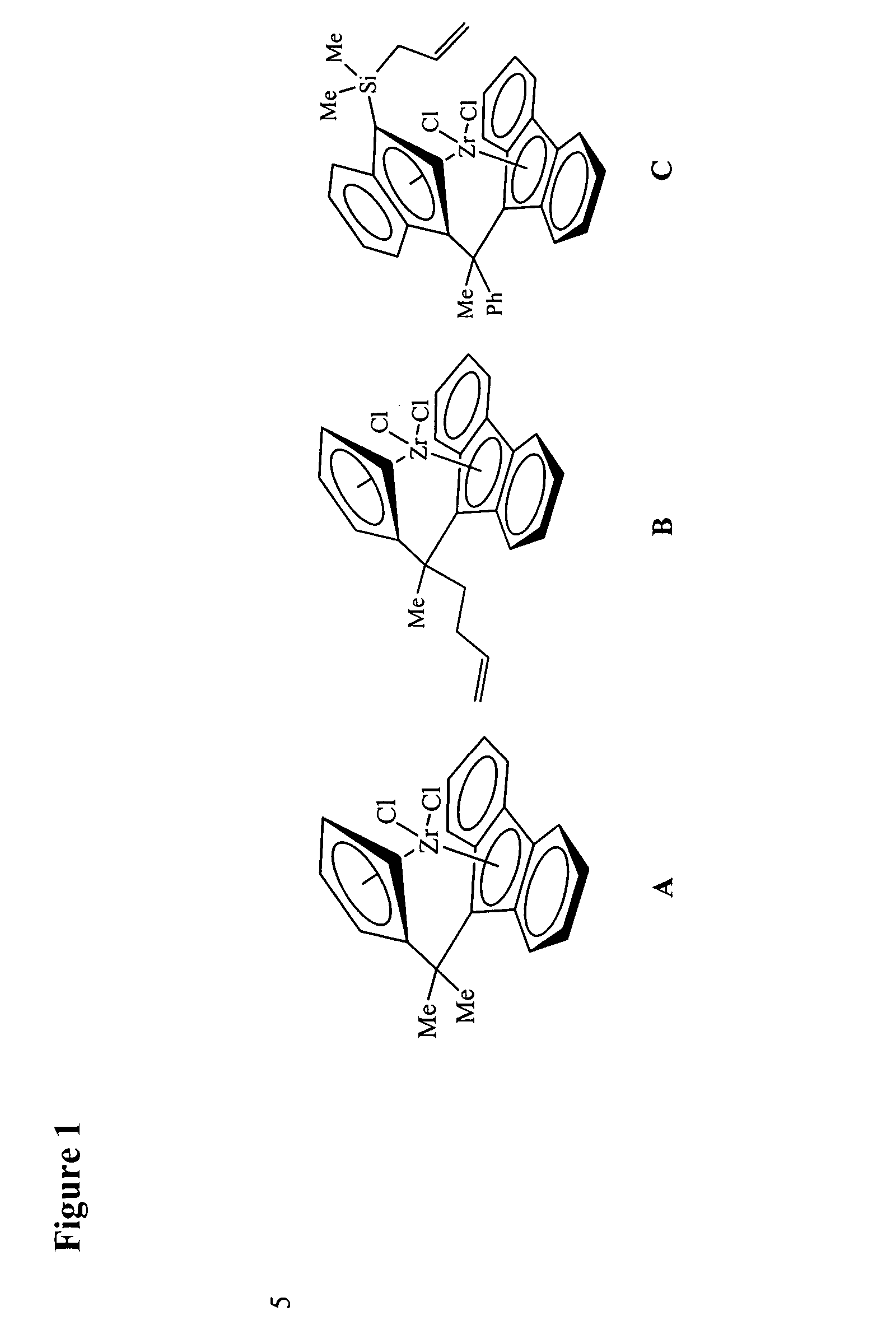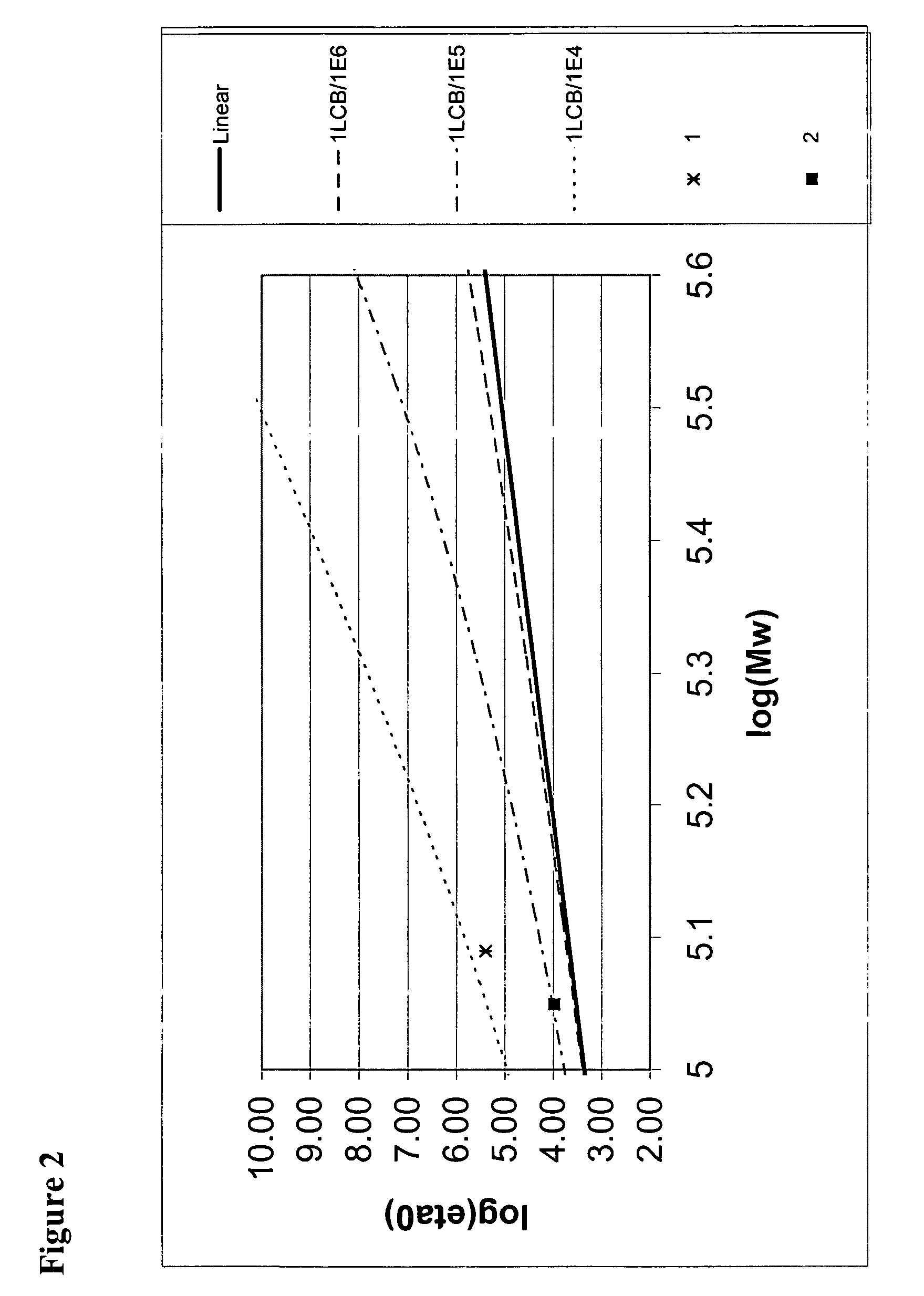Polymerization catalysts for producing polymers with low levels of long chain branching
a polymerization catalyst and long chain branching technology, applied in the direction of catalyst activation/preparation, physical/chemical process catalysts, chemical/physical processes, etc., can solve the problems of undesirable lcb presence and detrimental to film performance, and achieve the effect of improving productivity
- Summary
- Abstract
- Description
- Claims
- Application Information
AI Technical Summary
Benefits of technology
Problems solved by technology
Method used
Image
Examples
examples
General Testing Procedures
[0259] Melt index (MI, g / 10 min) was determined in accordance with ASTM D1238 condition F at 190° C. with a 2,160 gram weight.
[0260] High load melt index (HLMI, g / 10 min) was determined in accordance with ASTM D1238 condition E at 190° C. with a 21,600 gram weight.
[0261] Polymer density was determined in grams per cubic centimeter (g / cc) on a compression molded sample, cooled at about 15° C. per hour, and conditioned for about 40 hours at room temperature in accordance with ASTM D1505 and ASTM D1928, procedure C.
[0262] Molecular weight and molecular weight distributions were obtained using a PL-GPC 220 (Polymer Labs, UK) system equipped with a differential refractive index detector and three 7.5 mm×300 mm 20 um Mixed A-LS columns (Polymer Labs) running at 145° C. The flow rate of the mobile phase, 1,2,4-trichlorobenzene (TCB) containing 0.5 g / L 2,6-di-t-butyl-4-methylphenol (BHT), was set at 1 mL / min and the concentration of polymer solutions was gener...
examples 1-5
Comparative Catalytic Runs Varying the Metallocene, Activator-Support, and Pendent Alkene of the Metallocene
[0284] Examples 1-5 in Table 1 illustrate ethylene polymerization runs performed in a one-gallon autoclave reactor at 100° C., with two liters of isobutane diluent and triisobutylaluminum or triethylaluminum cocatalyst. No hydrogen or comonomer was added. Ethylene was fed on demand to maintain the specified pressure for the specified length of the polymerization run (Table 1). Ansa-Metallocene solutions were usually prepared by dissolving 20-25 mg of metallocene in a mixture of 0-5 mL of 1-hexene, 0-5 mL of 1 M TIBA (Aldrich) or TEA (AKZO), and 15-25 mL of heptane.
[0285] In cases where no precontacting was used, or precontacting was carried out in the reactor, the reactor was typically charged with TEA or TIBA, an aliquot of the metallocene solution, and the solid oxide. All materials were added through a charge port while venting isobutane. One method of charging catalyst ...
PUM
| Property | Measurement | Unit |
|---|---|---|
| time | aaaaa | aaaaa |
| temperature | aaaaa | aaaaa |
| temperature | aaaaa | aaaaa |
Abstract
Description
Claims
Application Information
 Login to View More
Login to View More - R&D
- Intellectual Property
- Life Sciences
- Materials
- Tech Scout
- Unparalleled Data Quality
- Higher Quality Content
- 60% Fewer Hallucinations
Browse by: Latest US Patents, China's latest patents, Technical Efficacy Thesaurus, Application Domain, Technology Topic, Popular Technical Reports.
© 2025 PatSnap. All rights reserved.Legal|Privacy policy|Modern Slavery Act Transparency Statement|Sitemap|About US| Contact US: help@patsnap.com



